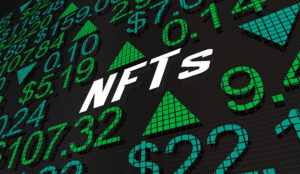New to the world of NFTs (Non-Fungible Tokens) and Crypto games and wondering what exactly is an NFT game?
Well, you’ll get your answers here.
Before we get into what is an NFT game, let’s start with the basics – what are NFTs?
What are NFTs?
NFT is an abbreviation of Non-Fungible Token, that is a type of digital asset stored in a distributed ledger or blockchain.
NFTs have various use cases, including collectible art pieces, digital assets in a game, and even tangible assets like real estate. They have solved the long-standing issue of creating collectible and ownable digital assets in a world where ‘copy-paste’ is omnipresent.
Being non-fungible, NFT properties cannot be swapped identically for other NFTs.
For example, you can trade a bitcoin for another bitcoin equally. But with NFTs, such trading is impossible, even when the NFTs are released in a series of several versions. This is because the metadata for each NFT differs from the other, which is why they can’t simply be swapped.
Now, for the answers to the question – what is an NFT game?
What is an NFT Game?
Image via Wizardia
NFT games are blockchain-based online games that allow players to buy, hold, stack, and trade NFTs in the form of in-game characters and digital assets.
NFT games have become very popular in the modern gaming world as fun mediums for earning crypto. However, the business model for all NFT games isn’t the same. For example, some NFT games require players to buy their NFTs to get started, whereas others offer free entry.
Here, it’s important to know that NFT games are a new concept and most NFT games are in their early development phases. Gamers shouldn’t expect an exceptional level of graphics from these games just yet.
However, with games like Wizardia working on AR/VR for their game, NFT games seem set to overtake traditional gaming environments in the coming years.
Despite being a very new concept, NFT games are a great place for gamers to start investing in crypto.
Now that we explained what is an NFT game, let’s discuss how they work.
How Do NFT Games Work?
NFT games are a very different concept than conventional NFTs, where you’d store crypto-collectibles in your wallets. Instead, NFT games use NFTs in their mechanisms, rules, and player interactions.
For example, the game could represent digital assets like your avatar and weapons as NFTs. Likewise, the digital items you find during the game could also be NFTs. You can collect all of these and swap these NFTs with other players to gain profit.
How To Identify a Legitimate NFT Game?
Being at its early stage, the NFT game ecosystem has several games whose NFT model and crypto might not be successful. Hence, it becomes necessary for gamers to check the legitimacy of the game they’re investing in.
In addition to knowing what is an NFT game, you need to also check the worthiness of an NFT game. To do this, you should look at its token supply numbers. An ideal NFT game should not have an unlimited supply of tokens.
Moreover, the incentive for holding and staking crypto with the project should be lucrative enough to entice more gamers. It’s crucial for the game to become popular because the more the investment, the better the return for you.
Closing Thoughts
NFT games transform the collectibility of digital assets by creating rules for players that allow them to interact with each other’s NFTs. Generally, not all the participants of an NFT game are there to play. Some people value the collectibility of NFTs in a game, whereas others enjoy their utility.
The fusion of gaming and finance has created new economies for NFTs and gaming and has changed the landscape of how people make money via NFTs.
As a result, NFTs aren’t just about collecting anymore; it’s about gaming too!
Now that you know what is an NFT, it’s time to pick the best one to invest in.
